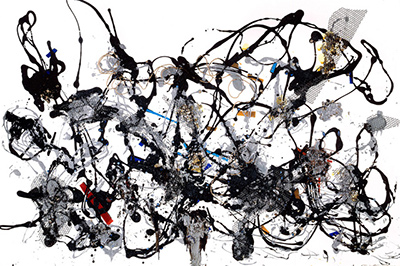Jackson Pollock painted numerous drip paintings during the 1950's, and Number 29 was painted in 1950. During this phase in the abstract impressionist's career, his drip method of painting used a variety of materials, mediums and paint finishes.
For the creation of Number 29 he used beads, glass, enamel paints, string and steel. All of these elements were used beautifully together and combined to form the striking and abstract image that we see today.
Pollock very much abandoned the traditional easel and paintbrush of his day, so as to be able to experiment with different art techniques.
In dripping the paint onto the desired surface, in this case steel, and experimenting with applying paint via beads and string, he was able to create art that would not have been possible by using a brush.
This method of painting also allowed him to be able to express himself thorough his art, without the restraints of an easel and paintbrush.
While many art historians and art critics have argued that his drip painting had an almost childlike element to them, many argued that it was this simplicity that evoked emotions within the observer.
Just as a child would paint with their fingers and paint by pouring it onto the desired surface, Pollock did just the same. His paintings are physical beings that come to life via the sheer energy that created them.
Pollock was influenced greatly in his career by the likes of the Surrealist painters and Picasso, and this is clearly evident in his drip painting creations.
There are no clear definitions of where the image begins and ends, there is nothing to define what the image is. The image was simply produced as a stream-of-consciousness, that was present in that moment of time, and because of this, the image and meaning will be forever changing.




